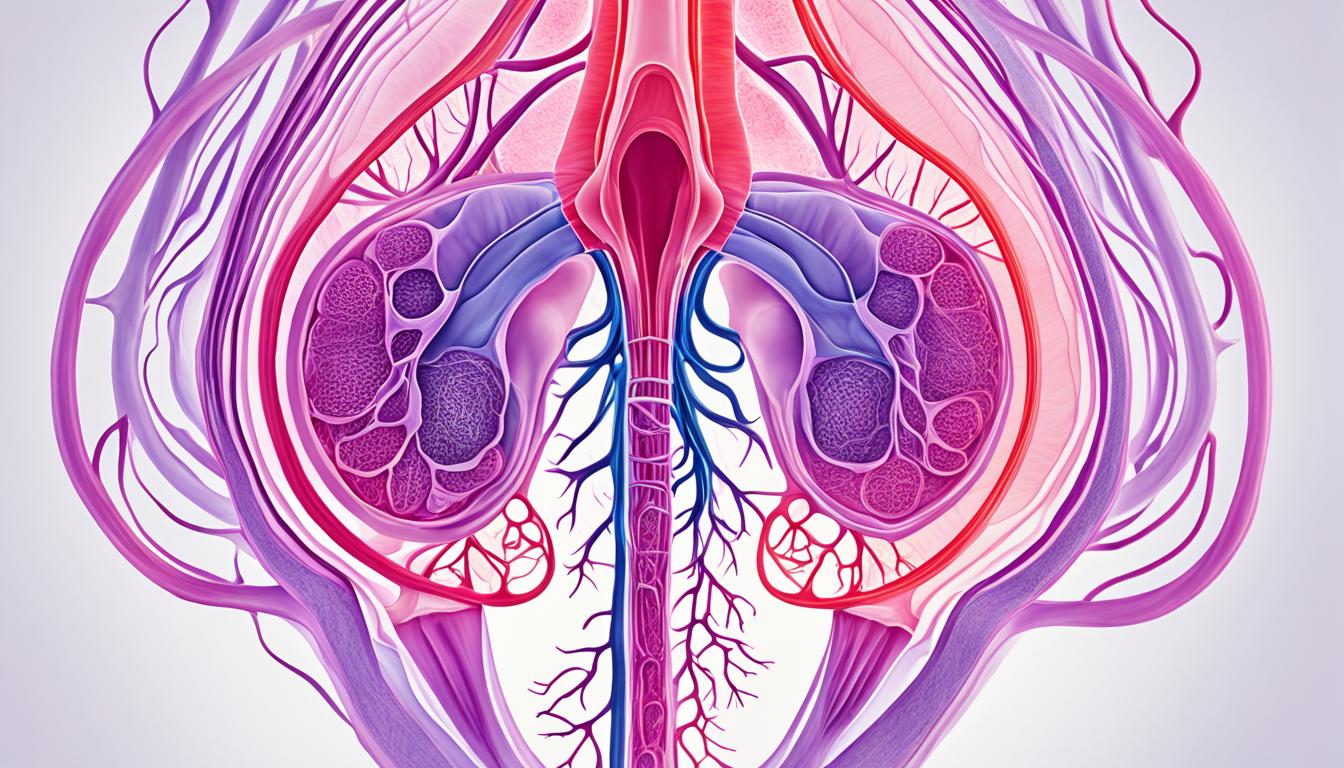Ovarian cysts are fluid-filled sacs that develop inside or on the ovary surface. They’re a common condition, often causing no symptoms and resolving without treatment.
However, some cysts can become large, rupture, or twist the ovary. This can result in severe pain and potential bleeding. Rarely, ovarian cysts may indicate ovarian cancer.
Key Takeaways
- Ovarian cysts are fluid-filled sacs that develop in the ovaries and are a common gynecological condition.
- Most ovarian cysts cause no symptoms and resolve without treatment, but some can become problematic.
- Symptoms of ovarian cysts include pelvic pain, irregular periods, and bloating.
- Causes of ovarian cysts include hormonal factors, endometriosis, and polycystic ovary syndrome.
- Treatment options for ovarian cysts include watchful waiting, medication, surgery, and stem cell therapy – an emerging, promising new approach.
Understanding Ovarian Cysts
Ovarian cysts are sacs filled with fluid. They develop inside or on the ovaries’ surface. Most women experience at least one cyst during their lifetime.
Cysts can vary greatly in size. They range from small, pea-sized structures to large masses several inches wide.
What are Ovarian Cysts?
Ovarian cysts are benign, fluid-filled pouches. They form within the ovaries as part of the female reproductive cycle.
The ovaries regularly produce and release eggs. In most cases, these cysts are harmless and resolve without intervention.
Types of Ovarian Cysts
There are two main ovarian cyst categories: functional and pathological. Functional cysts are most common, including follicular and luteal cysts.
These form during the normal menstrual cycle. Pathological cysts are more complex, like dermoid cysts, cystadenomas, and endometriomas.
Pathological cysts are often linked to polycystic ovary syndrome or other medical conditions.
Ovarian Cysts
Most ovarian cysts cause no symptoms. They are only discovered during routine exams or imaging tests. However, larger cysts or cysts that rupture can produce symptoms. These include pelvic pain, abdominal pain, and irregular periods.
Cysts that twist the ovary can also cause bloating, frequent urination, and pain during sex.
Symptoms of Ovarian Cysts
The most common ovarian cyst symptoms are:
- Pelvic pain – Dull, constant ache or sharp pain in lower abdomen.
- Abdominal pain – Feeling of heaviness, pressure, or fullness in abdomen.
- Irregular periods – Cycles longer, shorter, more or less frequent than normal.
- Bloating – Sensation of abdominal swelling or tightness.
- Frequent urination – Needing to urinate more often.
- Pain during sex – Discomfort or pain with intercourse.
Causes and Risk Factors
Causes of ovarian cysts vary by type:
- Hormonal factors – Fluctuations during menstrual cycle can lead to functional cysts.
- Endometriosis – Uterine lining tissue grows outside uterus, causing endometriomas.
- Pregnancy – Certain cysts, like corpus luteum cysts, can occur.
- Ovulation – Rupture of follicle during ovulation can result in cyst.
- Polycystic ovary syndrome (PCOS) – Hormonal disorder causing multiple small ovarian cysts.
- Infections – Pelvic inflammatory disease or infections can lead to cysts.
Conclusion
Ovarian cysts are a common condition. Small, symptomless cysts may require monitoring. Treatment like surgery or stem cell therapy may be needed. This depends on cyst size, type, and symptoms.
Work closely with healthcare professionals. Regular check-ups and imaging tests are important. Understanding the condition ensures the best outcome.
Stay informed and proactive about ovarian cysts. This maintains reproductive health and well-being. Medical advancements provide effective solutions. Patients can manage this condition and live healthily.

